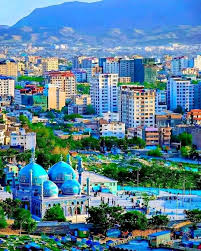Kabul, the capital and largest city of Afghanistan, is a vibrant metropolis with a rich history dating back over 3,500 years. Nestled in a valley between the Hindu Kush mountains, it has long been a strategic hub along ancient trade routes, including the Silk Road. The city has witnessed the rise and fall of numerous empires, from the Mauryans and Mughals to the Durrani dynasty, which established Kabul as Afghanistan’s capital in 1776. Today, it remains the country’s political, cultural, and economic center, with a population exceeding seven million.
Despite enduring decades of conflict, Kabul continues to evolve, blending tradition with modernity. The city is home to historical landmarks such as the Gardens of Babur, the Arg (presidential palace), and bustling bazaars that reflect its deep-rooted heritage. Its diverse population contributes to a dynamic cultural scene, with influences from Persian, Indian, and Central Asian traditions. As Afghanistan’s gateway to the world, Kabul remains a symbol of resilience and transformation.


Leave a Reply